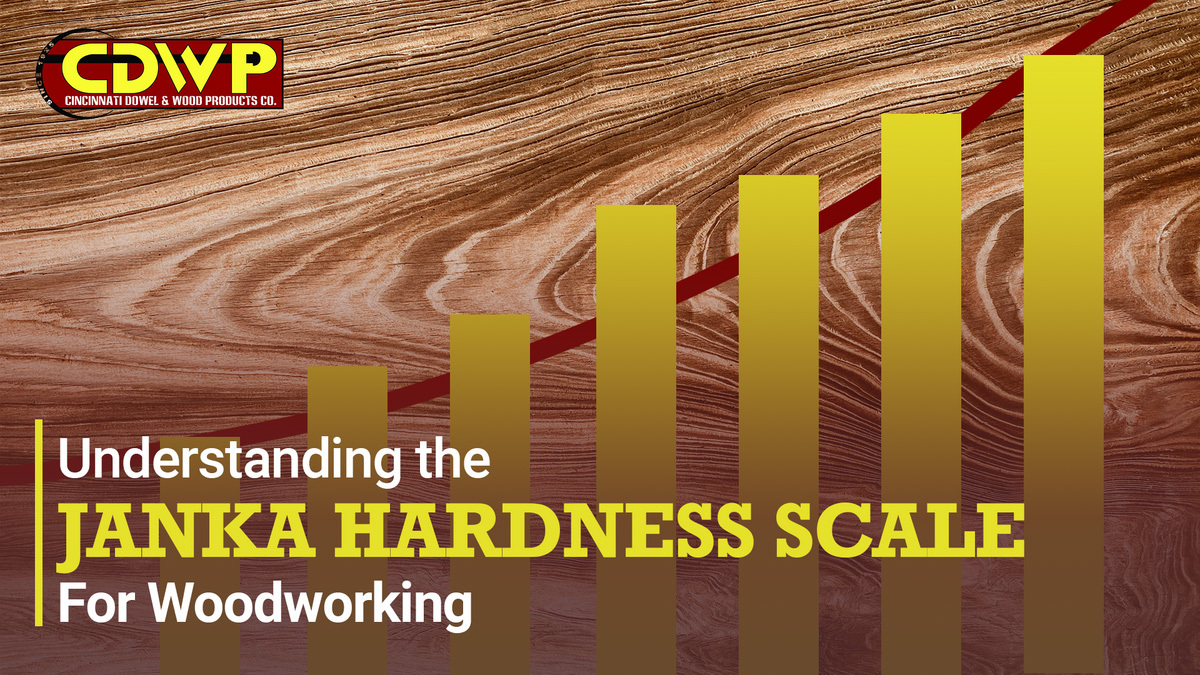Understanding the Janka Hardness Scale for Woodworking

This post will explain how the Janka Hardness scale measures wood hardness and some examples of wood species used in Cincinnati Dowel's wood components.
How is a Species of Wood’s Hardness Determined?
The Janka Hardness scale is the best tool available to determine a species of wood’s hardness. It assigns each species of wood a set numerical value. The higher the number, the harder the wood.
The Janka Scale was invented in 1906 by an Austrian wood researcher named Gabriel Janka. In 1923, the Janka Scale was standardized by the American Society for Testing and Materials.
The number is determined by measuring how many pounds per square inch of force is needed to push a steel ball halfway through a 2” x 2” x 6” piece of wood.
It is also important to remember that the results of the Janka test can vary based on grain. As a result, vertical grains are often tested separately and not shown on the scale.
The Janka Hardness scale runs from 0 to 4000. Very low scores often are not good for woodworking as they will scratch and splinter easily. Likewise, very hard woods are bad for woodworking as they are not easily cut and can be difficult for woodworkers to handle.
What Are Some Woods that Cincinnati Dowel Uses and Their Janka Rating?
The Janka scale helps you determine how resistant a species of wood is to dents, dings, scratches, and wear. This is especially useful for dowels as woodworkers rely upon them for maintaining the integrity of their projects.
Here are the Janka Hardness ratings of each type of wood Cincinnati Dowel uses.
- Poplar – 540
- Mahogany - 800
- Cherry - 950
- Walnut - 1010
- Teak - 1080
- Red Oak - 1290
- White Ash - 1320
- White oak - 1360
- Hard Maple - 1450
- Hickory – 1820
Ranging from poplar, the softest wood we use, to hickory, the hardest, woods near the middle of the scale are often preferable for woodworking. Notice that the hardest, hickory, is below 2000, and no wood even approaches the highest figure, 4000.
Cincinnati Dowel is Here for all Your Woodworking Needs
Wood hardness is one of the most important factors when you are determining what type of wood is best for your woodworking project. The Janka Hardness scale is one of the most useful tools at your disposal when it comes to making the best decision for you.
From poplar to hickory, Cincinnati Dowel has a wide range of woods with varying hardness to meet your needs. Whether you want exotic woods or more traditional materials, reach out to Cincinnati Dowel for the best wood components for your next woodworking project.
Click here to start a conversation with Cincinnati Dowel about your woodworking needs.
Happy with the difference Cincinnati Dowel has made for your projects? Leave us a quick five-star review here!
For more wood component and woodworking tips, follow Cincinnati Dowel on Facebook, Instagram and Twitter.


